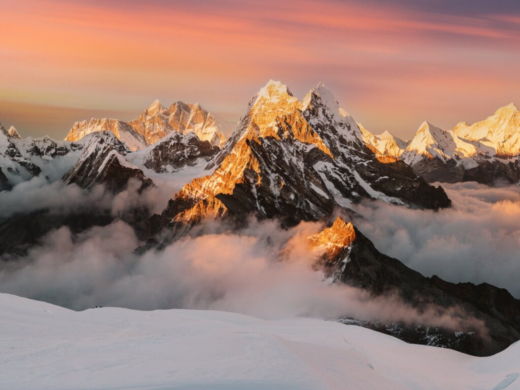
blog address: https://www.nepalsocialtreks.com/trip/mera-peak-climbing/
blog details: Mera Peak is one of the most popular trekking peaks in Nepal, standing at 6,476 meters (21,247 feet) above sea level. It's situated in the remote Hinku Valley of the Everest region and offers stunning views of some of the world's highest peaks, including Everest, Lhotse, Cho Oyu, and Makalu.
Here's a general overview of what you might expect when planning a Mera Peak climbing expedition:
Physical Fitness: Climbing Mera Peak requires a good level of physical fitness and endurance. Trekkers typically undertake a few weeks of prior trekking to acclimatize and build fitness levels before attempting the ascent.
Acclimatization: Acclimatization is crucial due to the altitude. Trekkers usually follow a well-planned itinerary that allows for gradual acclimatization to prevent altitude sickness.
Duration: The entire expedition usually takes around 18 to 20 days, including trekking to and from Lukla, acclimatization days, and the climb itself.
Route: The most common route for Mera Peak climbing starts with a flight from Kathmandu to Lukla, followed by trekking through the beautiful Hinku Valley, passing through villages like Paiya, Pangkoma, and Khare. The base camp is typically set up at around 5,300 meters (17,388 feet). From the base camp, climbers make their summit push usually in two days, with a high camp established around 5,800 meters (19,029 feet).
Technical Difficulty: Mera Peak is considered a non-technical climb, meaning it doesn't require advanced mountaineering skills like ice climbing or rope techniques. However, basic crampon and ice axe skills are essential, as well as knowledge of using fixed lines for safety.
Equipment: Standard mountaineering equipment such as crampons, ice axes, harnesses, helmets, and ropes are required for the climb. Most climbers hire these in Kathmandu or in Lukla before beginning the trek.
Weather: Weather conditions can be highly variable in the Himalayas. The climbing season for Mera Peak is typically in the spring (March to May) and autumn (September to November) when the weather is more stable and clear.
Guides and Permits: Hiring a local guide and obtaining the necessary permits (such as the climbing permit from the Nepal Mountaineering Association) are mandatory for climbing Mera Peak. Local guides are experienced in the terrain and can provide essential support and guidance throughout the expedition.
Safety: Safety is paramount in high-altitude mountaineering. Climbers need to be aware of the risks associated with altitude sickness, avalanches, and changing weather conditions. It's important to follow the guidance of experienced guides and make decisions based on safety rather than reaching the summit at any cost.
Environmental Considerations: Practicing responsible and sustainable trekking and climbing is crucial to preserve the fragile mountain environment. Leave-no-trace principles should be followed, and climbers should respect local customs and traditions.
Overall, climbing Mera Peak offers a fantastic opportunity for adventure enthusiasts to experience high-altitude mountaineering in the breathtaking landscapes of the Himalayas. However, proper preparation, acclimatization, and safety measures are essential for a successful and enjoyable expedition.
keywords: MeraPeak, PeakCimbinginNepal, Mountains, Mountaineering, HimalayanAdventure
member since: Mar 27, 2024 | Viewed: 51